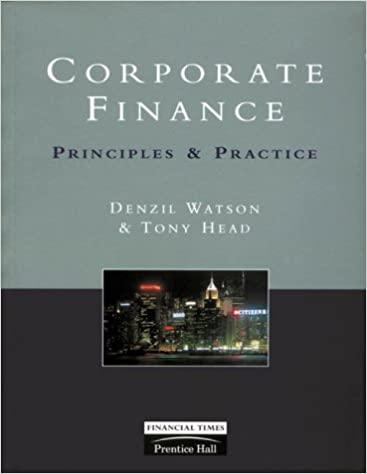

than ay rather ts is PROBLEM SET 2 1. s S 3 2 production of gasohol. It has 1000 shares of common stock outstanding, Great Midwest Corp. (GMC) produces alcohol from corn for use in the which are owned equally by Chip and Dale, its founders. Each of them has a basis in the stock of $1,000,000. It has two divisions, the Corn Products Division and the Gasohol Alcohol Products Division. Beyond Petrochemicals, Inc. (BP) has offered to purchase the Gasohol Alcohol Products Division and to employ the employees of the division to continue the business. The assets on the balance sheet (and estimates of the current fair market value of each asset) of GMC's Gasohol Alcohol Division are as follows: Asset FMV Basis Marketable securities $ 2,000,000 $ 1,000,000 Accounts receivable $ 4,000,000 $ 5,000,000 Inventory $ 7,000,000 $3,000,000 Land $20,000,000 $10,000,000 Buildings & Improvements $10,000,000 $ 7,000,000 $ $ 2,000,000 Equipment 0 Patents $ 5,000,000 $ 1,000,000 (a) (1) What are the tax consequences to all parties if BP pays GMC $65,000,000 for the Gasohol Alcohol Division? (2) What are the tax consequences if BP also paid Chip and Dale $5,000,000 each in consideration of their personal agreement not to enter into the production of gasohol (or to acquire or hold a significant interest in another corporation engaged in the (3) How would your answer to part (a)(1) differ if GMC did businesses through wholly owned limited liability companies, Corn not operate its two businesses directly, but instead operated the Production, LLC. and Gasohol Alcohol Products, LLC.; GMC PART 2 18 CORPORATE ACQUISITION TECHNIQUES production of gasohol) any time in the next five years? originally funded Gasohol Alcohol Products, LLC with $10,000,000 of cash to cover its start-up; and the sale was effected by GMC selling the sole membership unit in the LLC to BP for $65,000,000? (4) How would your answer to part (a)(1) differ if GMC did not operate its two businesses directly, but instead operated the businesses through wholly owned subsidiaries, Corn Production Corp. and Gasohol Alcohol Products, Inc., and BP purchased the stock of Gasohol Alcohol Products, Inc., in which GMC had a $10,000,000 basis? (b) (1) How would your answer to part (a)(1) differ if in addition to paying the $65,000,000 in cash, BP assumed a mortgage lien debt of $5,000,000 on the Gasohol Alcohol land and building? (2) How would your answer to part (a)(1) differ if in addition to paying the $65,000,000 in cash, BP assumed $5,000,000 of accounts payable owed by the Gasohol Alcohol division? (3) How would your answer to part (a)(1) differ if in addition to paying the $65,000,000 in cash, BP assumed any liability resulting from a pending products liability suit against GMC relating to the Gasohol Alcohol division? The suit sought $10,000,000 in damages, GMC and BP expected that there was only a 10% chance of losing the suit , and three years later a final judgment was entered awarding $9,000,000 to the plaintiff? than ay rather ts is PROBLEM SET 2 1. s S 3 2 production of gasohol. It has 1000 shares of common stock outstanding, Great Midwest Corp. (GMC) produces alcohol from corn for use in the which are owned equally by Chip and Dale, its founders. Each of them has a basis in the stock of $1,000,000. It has two divisions, the Corn Products Division and the Gasohol Alcohol Products Division. Beyond Petrochemicals, Inc. (BP) has offered to purchase the Gasohol Alcohol Products Division and to employ the employees of the division to continue the business. The assets on the balance sheet (and estimates of the current fair market value of each asset) of GMC's Gasohol Alcohol Division are as follows: Asset FMV Basis Marketable securities $ 2,000,000 $ 1,000,000 Accounts receivable $ 4,000,000 $ 5,000,000 Inventory $ 7,000,000 $3,000,000 Land $20,000,000 $10,000,000 Buildings & Improvements $10,000,000 $ 7,000,000 $ $ 2,000,000 Equipment 0 Patents $ 5,000,000 $ 1,000,000 (a) (1) What are the tax consequences to all parties if BP pays GMC $65,000,000 for the Gasohol Alcohol Division? (2) What are the tax consequences if BP also paid Chip and Dale $5,000,000 each in consideration of their personal agreement not to enter into the production of gasohol (or to acquire or hold a significant interest in another corporation engaged in the (3) How would your answer to part (a)(1) differ if GMC did businesses through wholly owned limited liability companies, Corn not operate its two businesses directly, but instead operated the Production, LLC. and Gasohol Alcohol Products, LLC.; GMC PART 2 18 CORPORATE ACQUISITION TECHNIQUES production of gasohol) any time in the next five years? originally funded Gasohol Alcohol Products, LLC with $10,000,000 of cash to cover its start-up; and the sale was effected by GMC selling the sole membership unit in the LLC to BP for $65,000,000? (4) How would your answer to part (a)(1) differ if GMC did not operate its two businesses directly, but instead operated the businesses through wholly owned subsidiaries, Corn Production Corp. and Gasohol Alcohol Products, Inc., and BP purchased the stock of Gasohol Alcohol Products, Inc., in which GMC had a $10,000,000 basis? (b) (1) How would your answer to part (a)(1) differ if in addition to paying the $65,000,000 in cash, BP assumed a mortgage lien debt of $5,000,000 on the Gasohol Alcohol land and building? (2) How would your answer to part (a)(1) differ if in addition to paying the $65,000,000 in cash, BP assumed $5,000,000 of accounts payable owed by the Gasohol Alcohol division? (3) How would your answer to part (a)(1) differ if in addition to paying the $65,000,000 in cash, BP assumed any liability resulting from a pending products liability suit against GMC relating to the Gasohol Alcohol division? The suit sought $10,000,000 in damages, GMC and BP expected that there was only a 10% chance of losing the suit , and three years later a final judgment was entered awarding $9,000,000 to the plaintiff








